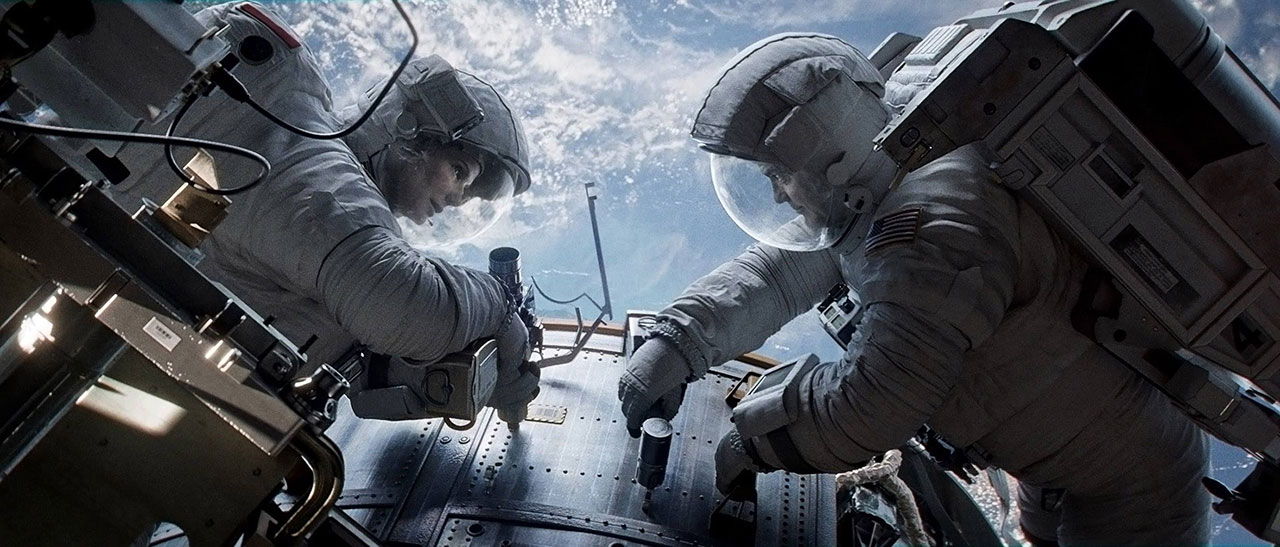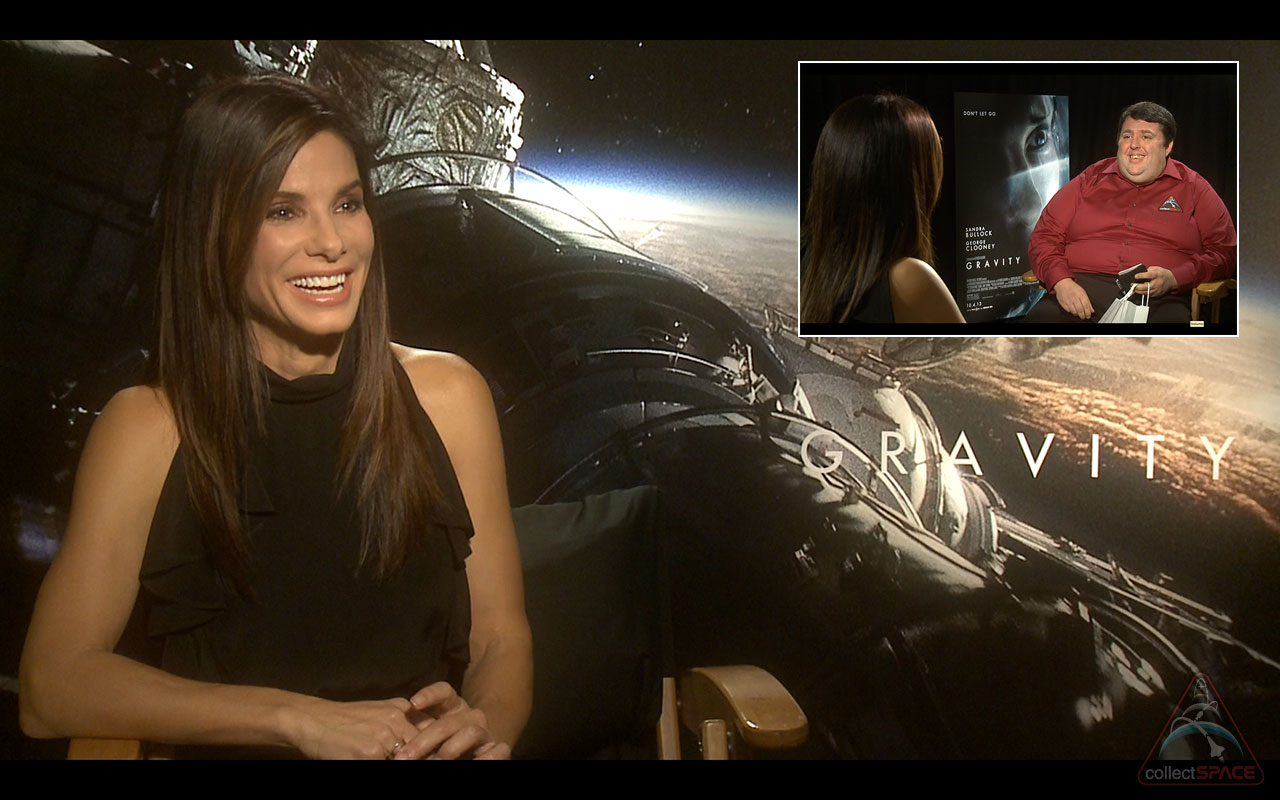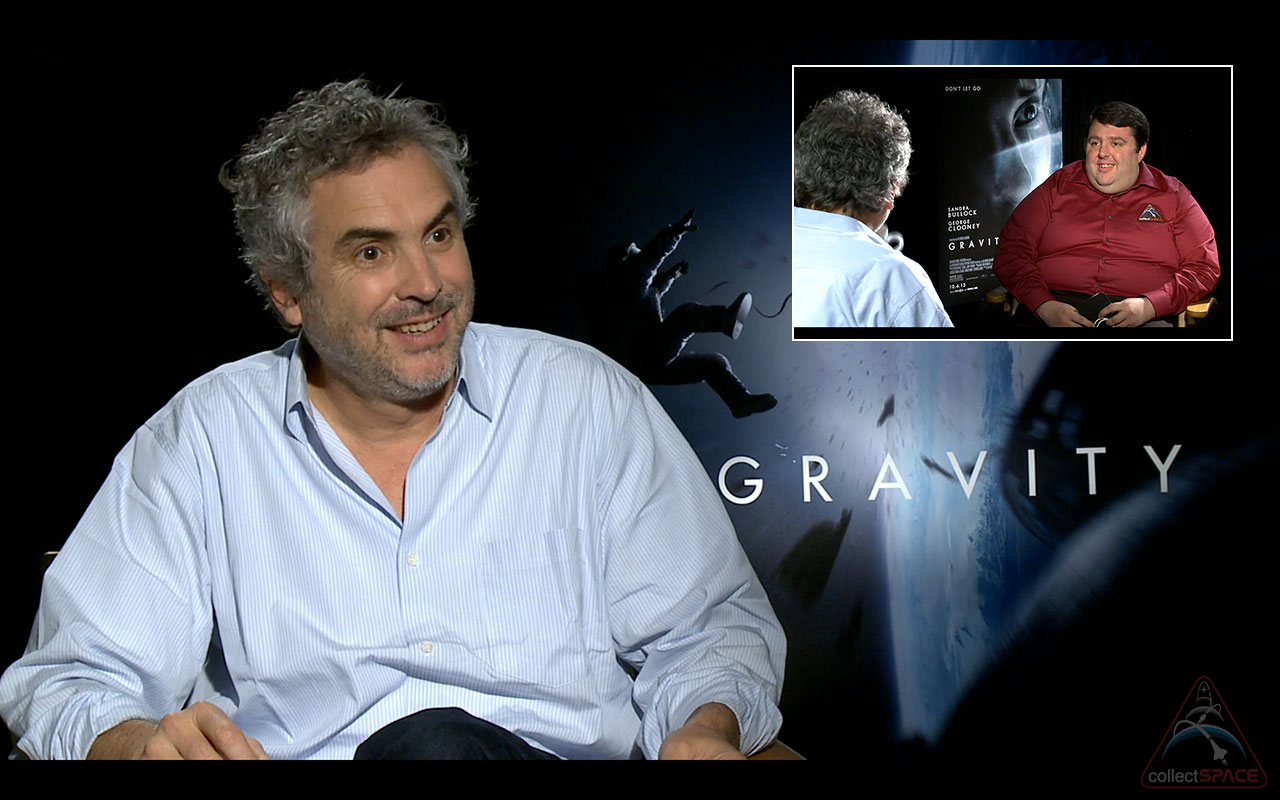Defining 'Gravity': Sandra Bullock, Alfonso Cuarón Talk Pull Behind Film's Title (Video)

In director Alfonso Cuarón's new movie, actress Sandra Bullock stars as an astronaut who suddenly finds herself floating uncontrollably in space. So why title the film "Gravity," the clear opposite of what the majority of people think of when they imagine life off of the planet Earth?
SPACE.com partner collectSPACE.com posed that question to Cuarón and Bullock in a recent interview, where the director and actress gave their impressions of the meaning behind "Gravity."
"Gravity is a major, major character in the film," explained Cuarón. "More specifically, microgravity."
"In reality, when we see astronauts floating around in orbit of planet Earth, it's not that there is no gravity, it's what is called microgravity," he said. [Video: Watch Bullock, Cuarón Define "Gravity"]

As defined by NASA, gravity is a force governing motion throughout the universe. It holds us to the ground, it keeps the moon in orbit around the Earth and the Earth in orbit around the sun.
"The condition of microgravity comes about whenever an object is in free fall," NASA describes on its website. "If you drop an apple on Earth, it falls at [the force of gravity]. If an astronaut on the space station drops an apple, it falls too. It just doesn't look like it's falling."
"That's because they're all falling together: the apple, the astronaut and the station," the space agency explains.
Get the Space.com Newsletter
Breaking space news, the latest updates on rocket launches, skywatching events and more!
In "Gravity," distributed by Warner Bros. Pictures, gravity is more than a physical force.
"It was a fundamental character of the film," Cuarón said.

As audiences will see when the film opens nationwide on Oct. 4, in "Gravity" Bullock's character, Dr. Ryan Stone, is a first-time astronaut who finds herself struggling against microgravity to regain a hold on her life, both literally and figuratively.
To that end, Bullock described gravity is "an adversary."
"I mean, the lack of gravity is the adversary, but it is also the metaphor in feeling so out of control in life," Bullock told collectSPACE.com. "Here, we are able to show it as a physical thing rather than the metaphor. The metaphor now becomes an actual adversary that your body does not know how to control."
During the making of the film, Bullock sought advice from NASA astronaut Cady Coleman, who at the time was on board the International Space Station, about moving while being weightless. Cuarón said it was very important that they recreated the physical environment as accurately as possible to convey the story he wanted "Gravity" to tell.
"We were trying to be as scientifically and as physically accurate to the laws of microgravity and zero resistance — another phenomena that happens when you don't have atmosphere and don't have gravity," said Cuarón. "There is no resistance. So, if you throw a ball, the ball does not drop, it just keeps traveling until a different force changes [its] trajectory."
A set piece, dubbed the "Light Box," made up of large flat panels fitted with thousands of tiny LED lights, allowed Bullock and her co-star George Clooney to be illuminated while cameras, which were mounted on large, computer-controlled robot arms, circled around them. The end result, when combined with state-of-the-art CGI renderings, gave Cuarón the ability to move the universe around the actors, giving the impression the characters were moving through space.
However, just as important as the visual effects were, the actors' — and in particular, Bullock needed to convey the emotional experience of being thrown into space and the internal struggle she faced of righting herself to the world.
"The lack of gravity is the perfect way to describe not being able to ground yourself," Bullock observed. "Gravity being the thing that you're like, 'Okay, if we know we have our feet on the ground, we know we can at least stand up. We can at least take a step in the right direction and have our faculties back in an environment that makes sense to us.'"
Click through to collectSPACE.com for exclusive video of Sandra Bullock and director Alfonso Cuarón discussing "Gravity."
Follow collectSPACE.com on Facebook and on Twitter at @collectSPACE. Copyright 2013 collectSPACE.com. All rights reserved.
Join our Space Forums to keep talking space on the latest missions, night sky and more! And if you have a news tip, correction or comment, let us know at: community@space.com.

Robert Pearlman is a space historian, journalist and the founder and editor of collectSPACE.com, a daily news publication and community devoted to space history with a particular focus on how and where space exploration intersects with pop culture. Pearlman is also a contributing writer for Space.com and co-author of "Space Stations: The Art, Science, and Reality of Working in Space” published by Smithsonian Books in 2018.In 2009, he was inducted into the U.S. Space Camp Hall of Fame in Huntsville, Alabama. In 2021, he was honored by the American Astronautical Society with the Ordway Award for Sustained Excellence in Spaceflight History. In 2023, the National Space Club Florida Committee recognized Pearlman with the Kolcum News and Communications Award for excellence in telling the space story along the Space Coast and throughout the world.










